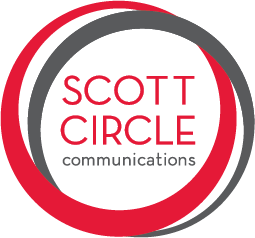5 Tactics for Mastering the DC Media Machine
These days, all eyes are on Washington, D.C.
From the follow-up surrounding the highly anticipated Mueller report to the border wall and even to the FAA grounding of Boeing jets, stories from the nation’s capital are front and center, dominating media headlines every single day.
That means there’s plenty of opportunity to get your organization and its leaders involved in national news stories, but your hook and response time are crucial.
Here are tips to get into this quick moving news cycle:
1. Be a media consumer.
Every PR professional knows it is essential to be familiar with the outlet and reporters you are pitching. To best understand the D.C. media landscape, start subscribing to newsletters and reading publications that focus on Washington, policies and campaigns. There’s a lot out there, but you can’t go wrong by starting with POLITICO Playbook, Axios AM, The Washington Post and The Hill. Publications like POLITICO and The Washington Post also have specialty newsletters on issues like aviation, cybersecurity, 2020 presidential campaigns, etc.
[RELATED: We're recognizing the brightest minds in digital marketing and social media.]
Don’t sign up for too many newsletters. It starts to be overwhelming and you won’t want to read everything. Start out small and add on subscriptions bit by bit. Also, make sure to add key publications to your RSS and Twitter feeds.
2. Find the right hook and be precise.
The D.C. press corps is very clear on what they are writing about. Do your research before pitching. Remember that these outlets are really focused on policy and politics. For example, just because someone covers something like the Federal Aviation Administration (FAA) doesn’t mean they want to know about the vacation package to the Bahamas for an airline or hotel brand. These reporters are focused on advocacy, policy and political trends.
Don’t forget about local media, too. For example, if the FAA is grounding planes, think about how that will impact your community and your local businesses and then pitch local reporters that story.
3. Respond quickly and concisely.
Reporters have to move fast. They are often filing live from congressional hearing rooms, the White House briefing room and from the steps of the Supreme Court, all while skimming (hundreds of) emails on their phones.
Send an email quickly with resources clearly mapped out for them. Who is your spokesperson? What would they say? When are they available? Alternatively, you can put together a short statement quickly, post on your platforms and link to the statement so the reporter can possibly retweet it or link to it. The easier you make it for them to understand how you can contribute to a timely news story, the more likely they’ll use your resource.
4. Monitor changing trends and breaking stories.
Since time is of the essence, it is best to prepare for expected stories in advance. Follow legislation on the Hill, expected Supreme Court decisions and big events like rallies and marches.
Prepare statements and social media content in advance. Often, this means creating two different statements depending on the outcome. Start pitching reporters in advance. If you have a spokesperson who can talk about a certain legislative outcome, start building a relationship with a reporter so they are called upon as an expert when news breaks. After the news breaks, it’s too late.
5. Create content.
Even if you employ all the tactics above, it can still be challenging to be part of a news story. So, create your own news.
Write a piece for Medium or your blog, use all your social media channels, send an alert to your audience about your organization’s take on a certain issue. Eventually, reporters will come around and it will be helpful for them to see what your organization has said in the past.
This article was originally published in PR Daily.
